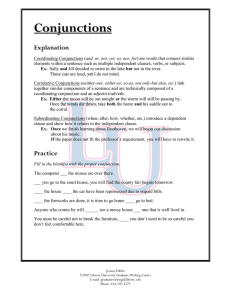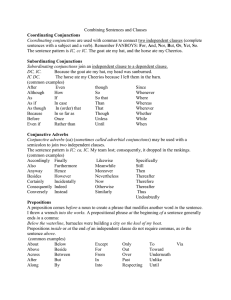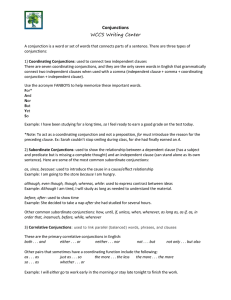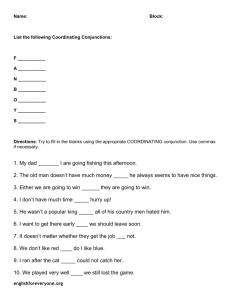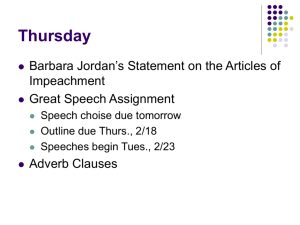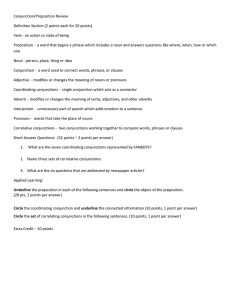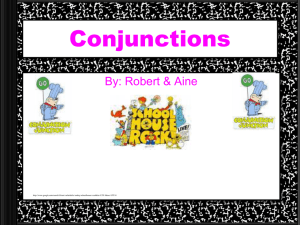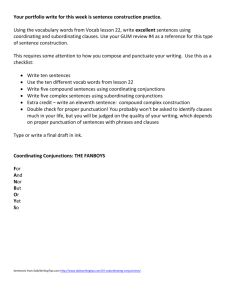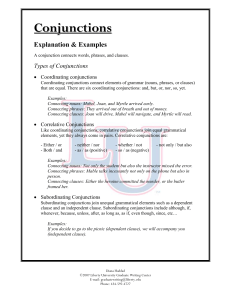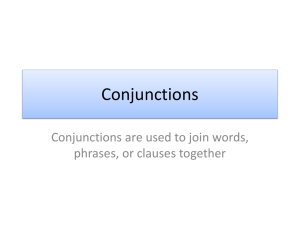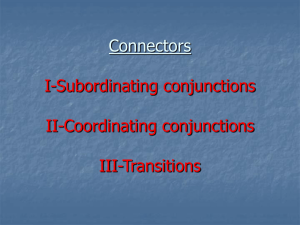Conjuctions
advertisement
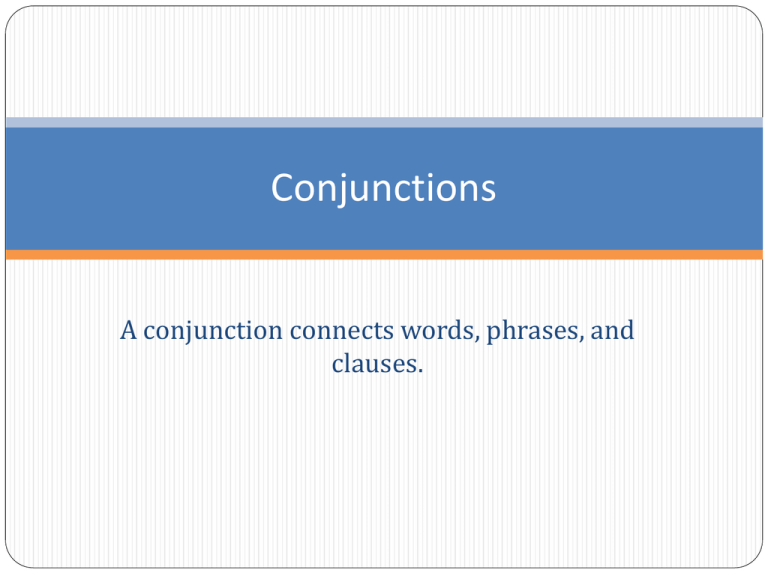
Conjunctions A conjunction connects words, phrases, and clauses. There are 3 types… Coordinating Conjunctions Correlative Conjunctions Subordinating Conjunctions Coordinating Conjunctions ...are words that connect similar elements within a sentence such as multiple independent clauses, verbs, or subjects. There are six coordinating conjunctions: and, but, or, nor, so, yet Examples: Mabel, Joan, and Myrtle arrived early. They arrived out of breath and out of money. Joan will drive, Mabel will navigate, and Myrtle will read. Sally and Jill decided to swim in the lake but not in the river. Those cats are loud, yet I do not mind. Correlative Conjunctions …link together similar components of a sentence and are technically composed of a coordinating conjunction and an adjective/adverb. either / or both / and Correlative conjunctions are: neither / nor whether / not as / as (positive) so / as (negative) not only / but also Examples: Neither the dog nor the cat was bothered by the noise. Once the winds die down, bring in both the horse and his saddle out to the corral. Not only the student but also the instructor missed the error. Either the heroine committed the murder, or the butler framed her. Mable talks incessantly not only on the phone but also in person. Subordinating Conjunctions …introduce a dependent clause and show how it relates to the dependant clause. Subordinating conjunctions include: although, if, whenever, because, unless, after, as long as, as if, even though, since, when, how, whether, etc… Examples: If you decide to go to the picnic (dependent clause), we will accompany you (independent clause). Once we finish learning about Beethoven, we will begin our discussion about his music. If the paper does not fit the professor’s requirement, you will have to rewrite it.

